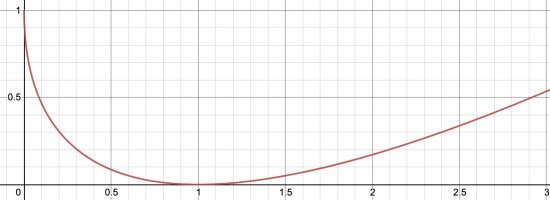I'm talking about this integral, it seems like you re talking about integral from the main postThank you guys, I got it now, was so easy but I'm blind sometimes...
What about next integral, integration area is so weird...
∬D(x+y)dxdy,D:x≥0,y≥0,x+y≤1
Double integral -II
- Thread starter canvas
- Start date
OKSince this is a new problem, can you please post it in a new thread?
Sorry, it is my bad. I was working on x+y≤0Ok. Now, if you are working in the real analysis, this inequality is wrong,
x+y≤1
Why?
Assume that x=4, then
4+y≤1
2+y≤1
y≤−1
Can you give me a number if I plug it in y, it will give me −1 or less?
My question for you is, are you challenging yourself to move this integral from cartesian coordinate to polar coordinate, or the instructor is asking you to do that?
Usually, we change the integral to polar to make calculations easier. This integral can be solved easily in cartesian coordinate.
Usually, we change the integral to polar to make calculations easier. This integral can be solved easily in cartesian coordinate.
I'm trying to solve it both ways: in Cartesian coordinate system, and polar coordinate system. But I don't have any idea for any, I'm just a beginner in double integrals, can you give me a hint how to solve it in Cartesian coordinate? What's the range of integration for x and y?
BigBeachBanana
Senior Member
- Joined
- Nov 19, 2021
- Messages
- 2,277
Graphs are your friends. They help you determine the limits. There are two ways to solve the problem: dxdy or dydx. My personal preference is dydx. By holding x constant from 0 to 1, y varies between 0 and the curve x+y≤1⟹y≤(1−x)2I'm trying to solve it both ways: in Cartesian coordinate system, and polar coordinate system. But I don't have any idea for any, I'm just a beginner in double integrals, can you give me a hint how to solve it in Cartesian coordinate? What's the range of integration for x and y?

I was afraid about squaring both sides, because of the sign of RHSGraphs are your friends. They help you determine the limits. There are two ways to solve the problem: dxdy or dydx. My personal preference is dydx. By holding x constant from 0 to 1, y varies between 0 and the curve x+y≤1⟹y≤(1−x)2
View attachment 30785
BigBeachBanana
Senior Member
- Joined
- Nov 19, 2021
- Messages
- 2,277
If you want the dy comes before dx, it is ok too.∫01(∫0x−2x+1(x+y)dy)dxis it okay?
∫01∫0(1−x)2(x+y) dy dx
why don'w we take the area from (1,+inf) ?This is the graph of y=(1−x)2. Although it shows more than what we're originally wanted, but when you integrate w.r.t x, it restricts from 0 to 1.
View attachment 30787
BigBeachBanana
Senior Member
- Joined
- Nov 19, 2021
- Messages
- 2,277
I'm assuming you're referring to x's limits. Look at the original region in post #11. X's limits only range from 0-1. The addition region 1 to infinity was introduced because we squared y. But if you were to take from 1-infinity, the definite integral diverges because there will be an infinite amount of area.why don'w we take the area from (1,+inf) ?
BigBeachBanana
Senior Member
- Joined
- Nov 19, 2021
- Messages
- 2,277
Let's look at the inequality analytically: 0≤x+y≤1Since it is bounded by 1, and you can't have negatives inside square roots, then the least and most x or y can be is between 0 and 1. Does this help?"X's limits only range from 0-1."
Can't see that ;/

